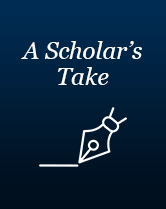
Not the First or the Last Massacre
As the world condemned the slaughter of more than 100 people, among them dozens of children, in Houla, Syria, the United Nations and Arab League envoy Kofi Annan challenged President Bashar al-Assad to take “bold steps” to prove that the Syrian government is serious about resolving the crisis peacefully. Annan called for an immediate end to the violence and the release of detainees. Speaking to the opposition, he said, “This message of peace is not only for the government but for everyone with a gun.”
The odds are against the Annan initiative. Time and again, the ceasefire has been violated and the Syrian authorities have failed to withdraw most of their heavy armour from urban centres. As for dialogue, there exists no common ground between the multifaceted opposition and the Assad regime.
Syria is in the grip of an armed conflict and there is no end in sight. Chaos and violence have spread, including kidnappings, assassinations and car bombings. The authorities in Damascus no longer have a monopoly on the use of force and they are unable to control the land. More and more protesters have taken up arms; the Free Syrian Army is just one among many armed units operating independently of one another. The rot has set in.
Sadly, Houla will not be the first or the last massacre in Syria. It represents, however, a watershed in the escalation of sectarian tensions between the Assad regime and its hardcore supporters, mostly Alawites, and the Sunni-dominated opposition. Syria today most closely resembles Lebanon in 1975, at the start of the civil war that lasted 15 years and almost tore the country apart.
Although the Syrian uprising was initially driven by economic and political grievances, it has become increasingly polarised along communal lines. As trust breaks down and the body count rises, people fall back on their religious, ethnic and tribal identities. Syria has not yet passed the point of no return but there is a great danger, if the bloodshed continues, that the country will descend into all-out civil strife.
Balance of power
In contrast to Libya, the Syrian crisis is exacerbated by a fierce regional cold war between Shia-based Iran and Sunni-led Saudi Arabia. The Tehran-Baghdad road is a lifeline for the besieged Assad regime. There is also increasing evidence that the Gulf states have begun to arm the rebels and they will most likely double their efforts in the coming weeks.
Meanwhile, the western powers have neither the will nor the appetite for military intervention in Syria – and Assad knows it. Despite the killings of more than 10,000 people since the uprising began 14 months ago, there has been no pronounced shift in the position of Russia, Syria’s key international ally.
Even though the Houla atrocity forced Russia to support a UN Security Council statement condemning the violence, Moscow hesitated to place sole responsibility on the Syrian egime, warning that the government there faces a rising terrorist threat that bears the “clear signature of al-Qaeda”.
Nevertheless, the scale of the slaughter has revived questions about military intervention in Syria. The chairman of the US Joint Chiefs of Staff, General Martin Dempsey, warned that continued atrocities could trigger military intervention – a subtle shift in the US position. But there is little appetite for further overseas adventures. The White House distanced itself from Dempsey, and Barack Obama promised on 28 May to send US soldiers to war only when “absolutely necessary”.
Europe is also looking inwards, focusing on putting its economic and financial house in order. In the absence of a Security Council resolution authorising the use of force, no European leader would go to war over Syria.
As the crisis descends into a full-scale confrontation, the world is running out of ways to stop the killing. Atrocities could make military intervention more likely, but the west, and particularly the US, believes that the disadvantages of intervention (increased carnage and a region-wide war) outweigh the advantages of saving civilian lives.
There are a number of factors that make it difficult for outside observers to predict what will happen next. We don’t yet know what damage sanctions have done – can Syria survive another winter without access to food, heating oil or gas?
The middle classes, Assad’s support base, are fleeing the country. And there could be a rupture in the regime, perhaps arising from tensions within the state security apparatus. Ultimately, the internal balance of power in Syria will determine whether Assad goes or stays. Unlike elsewhere in the Middle East, we are likely to see a bloody, protracted conflict.
Fawaz A Gerges is a Fellow at ISPU and professor of international relations at the London School of Economics. His book “Obama and the Middle East: the End of America’s Moment?” will be published by Palgrave.
This article was published by The New Statesman on June 3, 2012. Read it here.
ISPU scholars are provided a space on our site to display a selection of op-eds. These were not necessarily commissioned by ISPU, nor is their presence on the site equal to an endorsement of the content. The opinions expressed are that of the author and do not necessarily reflect the views of ISPU.


